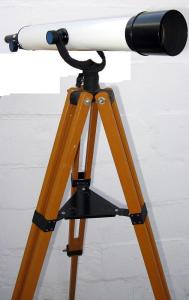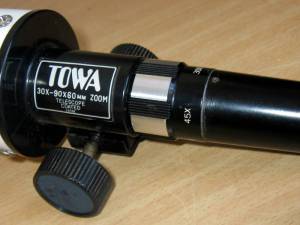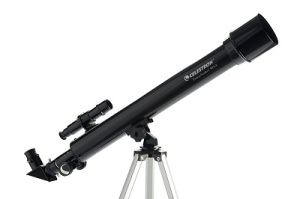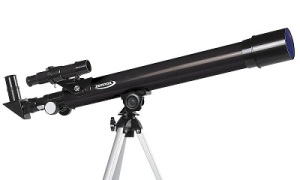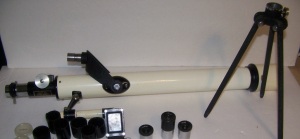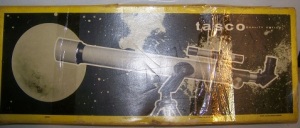
This is a scope i bought some time ago, early last year as i recall and since then i’ve been modifying it and seeing what it’s capable of. I do remember shortly after the purchase someone on either Cloudy Nights or StarGazers Lounge, passed a comment about maybe the purchaser was under the mistaken impression that this was a Unitron!. Seriously? I doubt anyone that knows about Unitrons would think they’d get one for the tiny sum i paid for this scope (£27 inc shipping!). At the time i was interested in small scopes from the 50’s to the 80’s, knowing that most scopes of that era were optically good and somewhat better quality than today’s offerings. Japanese construction with wooden tripods and cast mounts, all much superior than the spindly plastic and aluminium gear supplied with most modern items. Above all, it was cheap…. and i can’t resist cheap.
With any unknown scope comes the gamble that what you’re buying is rubbish.. after all one of the reasons people sell things is because the item in question is crap. Luckily i got a very good scope for my money but with a little work on my part. The focuser and objective cell are plastic, the tube is aluminium but cost cutting is evident. The inside of the focusing tube is brass coloured and shiny as hell. The cell is held in place by one screw that isn’t properly countersunk and pushes on the dew shield. The focuser itself isn’t properly aligned and needed modifying. All in all, some might say the scope was a bad product, but like nearly all the scopes i own, a little work here and there makes an okay scope into a real performer. When you consider that the scope came with eyepieces, diagonal and a wooden tripod the cash and time i spent was worthwhile. It’s light, portable and it performs as well as any 50mm scope should.
Observing produced good results, Sigma Orionis was split beautifully, Also Castor in Gemini and finally Algieba (gamma leonis) was beautifully split with the secondary sitting nicely on the diffraction ring of the primary. A trip around Orion was cut short by cloud but at least the cloud had parted long enough to get a few doubles in. Overall this scope performs really well, it was a gamble buying it as i knew nothing of the brand or the lens manufacturer. I’ll post a little more about manufacturers in a later topic, for now though i would recommend the Unicon to anyone looking for a good low price 50mm scope. That said, this is the only example i’ve seen, but there is a Jason model with similar build and lens manufacture.
